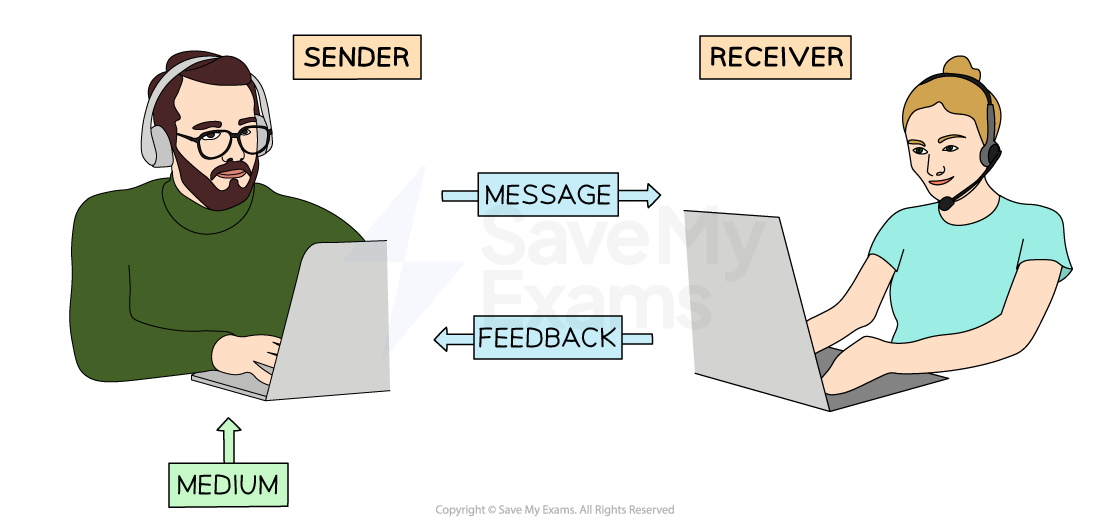The Importance of Effective Communication
- Communication is the successful transfer of messages between sender(s) and receiver(s)
- Internal communication is the exchange of message(s) between two or more members of the same organisation
- E.g. Telephone call between a sales manager and a finance team member
- E.g. Telephone call between a sales manager and a finance team member
- External communication is the exchange of message(s) between an organisation and external entities such as customers, suppliers or investors
- E.g. Sending an online order form to a supplier
- E.g. Sending an online order form to a supplier
- One-way communication transmits a message which does not require any feedback
- E.g. Sign in a supermarket stating 'wet floor' to customers and staff
- E.g. Sign in a supermarket stating 'wet floor' to customers and staff
- Two-way communication occurs when the receiver gives a response to the message received
- E.g. Email between two members staff discussing the success of a new promotional campaign
- E.g. Email between two members staff discussing the success of a new promotional campaign
- Formal communication is channeled through the businesses organisational structure and is likely to be recorded in some way
- E.g Minutes of an appraisal meeting
- E.g Minutes of an appraisal meeting
- Informal communication is any communication that takes place outside of the official channels and is unlikely to be formally recorded
- E.g. a short lunchtime conversation about workload with a colleague
- E.g. a short lunchtime conversation about workload with a colleague
Diagram to show the Process of Communication

A sender passes the information to the receiver using a medium of communication such as email
- Effective communication ensures that clear messages are sent, received, understood and acted upon in the way intended
- Effective communication should be
- Clear and unambiguous
- Appropriate to the context and to the sender
- Sent to the correct receiver in an accessible format
- Timely and contain only the required amount of detail
The Benefits of Effective Communication
- Helps managers and employees to minimise mistakes
- Supports everyone involved in a business to understand their role and know what is expected of them
- Ensures that the businesses values and objectives are clear
- Provides customers with the information they need to understand goods and services
- Minimises business costs
- Helps businesses to effectively exploit new opportunities
- Managers should make sure that communication is organised and controlled to ensure that a suitable level of communication exists between key stakeholders
- A 2021 survey of US workers found that more than one-third reported email overload that might lead them to resign from their jobs


